

A MINI FOR THE NEXT GENERATION
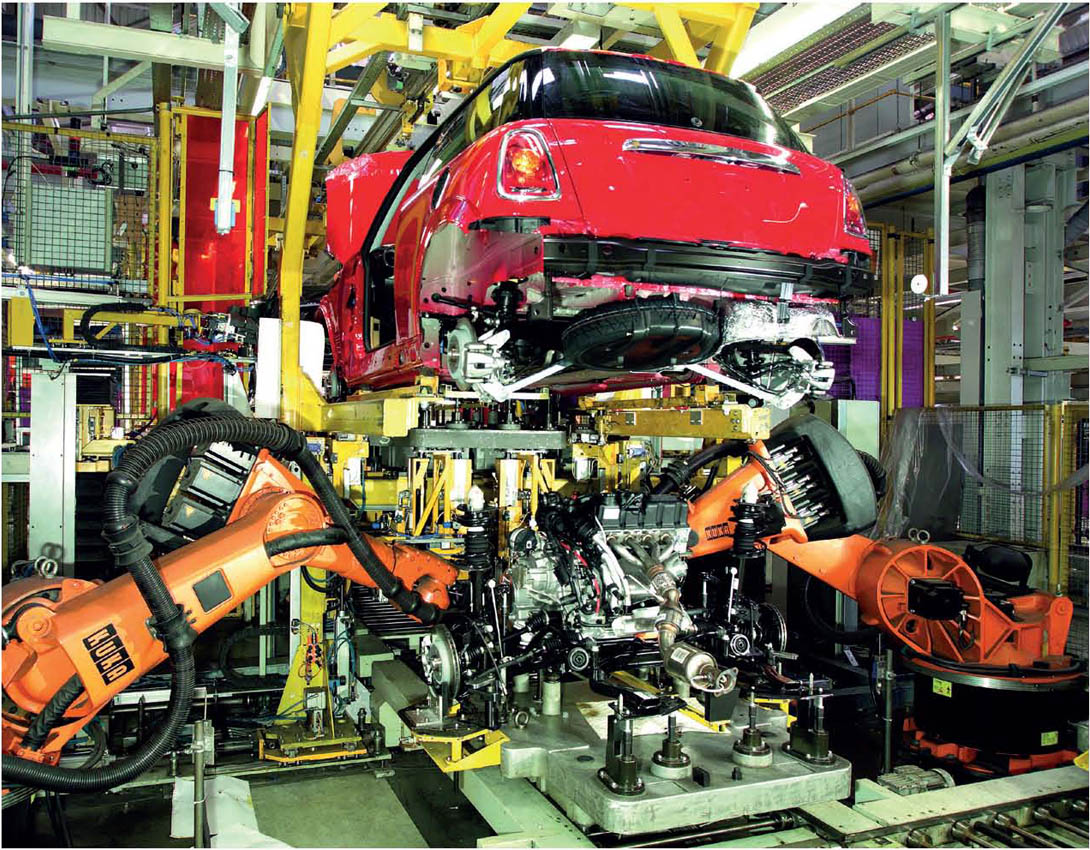
In September 2006, production began on the new MINI R56 hatchback. NEWSPRESS
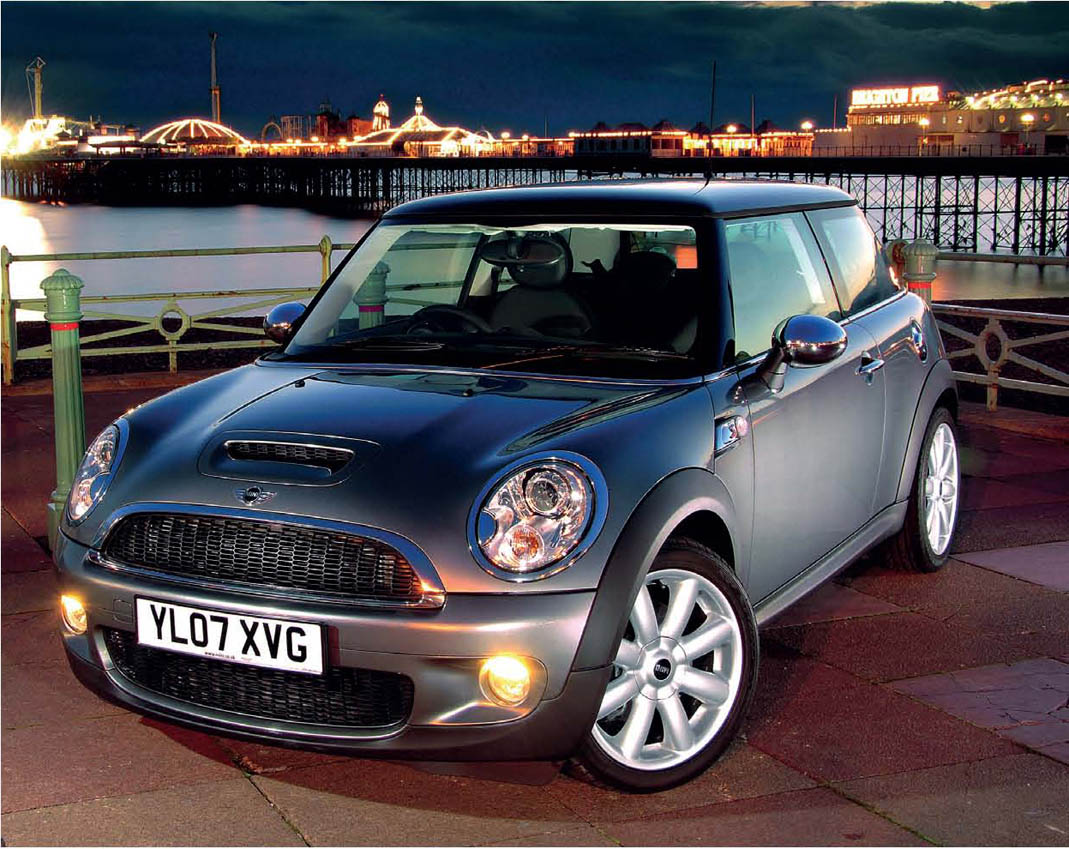
The second generation MINI received a number of styling upgrades. NEWSPRESS
The summer of 2006 marked the end of production for the first generation MINI hatch, which had now put the brand firmly on the map. By September, production of the second generation MINI hatchback, R56, had begun in Cooper and Cooper S form, but it wasn’t until March 2007 that the new MINI One and One D followed on the production lines. The press feared that BMW had taken the fun out of the MINI, with ever-growing efficiency and safety regulations altering the development of the cars. Could R56 live up to the standards already set by R50, R53 and R52? It was clear that three key areas remained the same: the ‘retro styling’, the ‘kart-like handling’ and the ‘wheel-at-each-corner control’.
What was so remarkable about the Mini, Mini Cooper and Mini Cooper S of the 1960s and 1970s was that on those 10in wheels, the little car really did handle like a go-kart. As the driver, the steering wheel connects you directly with the roads: you could feel everything those wheels were doing without any technologically enhanced systems such as power steering and anti-lock brakes (ABS) getting in the way. The Mini was raw and simple. By 2007 times had obviously changed, but MINI managed to retain those key driving qualities. Despite running on larger 15in, 16in and 17in wheels, the MINI is still one of the few hot hatches on the road to offer the same levels of handling and driver entertainment as its predecessor.
Layout and chassis
Three-door, four-seat hatchback with steel body/chassis
Engine platform: N12B14
Transmission: M6
No. of doors: 3
No. of seats: 4
Engine
Type: 1.6-litre, in-line
No. of cylinders: 4
Valves: 16
No. of valves per cylinder: 4
Block material: Aluminium
Head material: Aluminium
Cooling: Air cooled
Fuel management: MEV 17.2
Displacement: 1397cc
Stroke/Bore: 75.0/77.0mm
Power output: 96bhp
Max. Torque: 153Nm
Compression ratio: 11:1
Transmission
Type: Getrag G255
1st 3.214
2nd 1.792
3rd 1.194
4th 0.914
5th 0.784
6th 0.683
Suspension and steering
Suspension front: MacPherson struts, coil springs, anti-roll bar
Suspension rear: Z-axle, longitudinal struts, coil springs, anti-roll bar
Steering type: Rack and pinion Zahnst (EPS)
Steering ratio: 14.1:1
Tyres
Tyre size front: 175/65R15 84 H
Tyre size rear: 175/65R15 84 H
Wheel size front: 5.5 J × 15 steel wheel
Wheels size rear: 6.5 J × 16 steel wheel
Brakes
Brake front and diameter: Ventilated discs 280mm
Brake rear and diameter: Solid discs 259mm
Dimensions
Vehicle length: 3,699mm (146in)
Vehicle width: 1,683mm (66in)
Vehicle height: 1,407mm (55in)
Wheelbase: 2,467mm (97in)
Turning circle: 10.7m (35ft)
Overhang front: 565mm (22in)
Overhang rear: 139mm (5in)
Track front: 1,459mm (57in)
Track rear: 1,467mm (58in)
Trunk volume: 160–680cu m
Tank capacity: 40 litres
Unladen weight: 1,060/1,135kg (2,337/2,503lb)
Axle load ratio, rear: 38.9 per cent
Gross vehicle weight: 1,510kg (3,330lb)
Payload: 450kg (992lb)
Axle load limit front: 850kg (1,874lb)
Axle load limit rear: 740kg (1,632lb)
Performance
Top speed: 116mph (187km/h)
Acceleration 0–62mph: 10 seconds
Fuel consumption
Combined: 52mpg (5.4ltr/100km)
CO2 emissions: 127g/km
NEW YEAR, NEW ENGINE: MINI MINIMALISM
There was more output, more efficiency and more driving fun thanks to a thoroughly revised range of petrol engines for the MINI, MINI Clubman and MINI Convertible. In 2010, the Hatchback, Clubman and Convertible were given an extensively revised range of petrol engines, with the key aim to make MINI the market leader in producing sporty yet efficient engines for premium small cars. From this point, all petrol MINIs would meet the EU5 exhaust emissions standard in Europe. The powertrain modifications further enhanced the relationship between performance and CO2 emissions in all petrol-engined MINIs. The Cooper S, for example, was given a new 184bhp, 1.6-litre 4-cylinder engine, which emits only 136g/km of CO2 per kilometre, according to the EU test cycle – that’s 13g/km less than its predecessor.
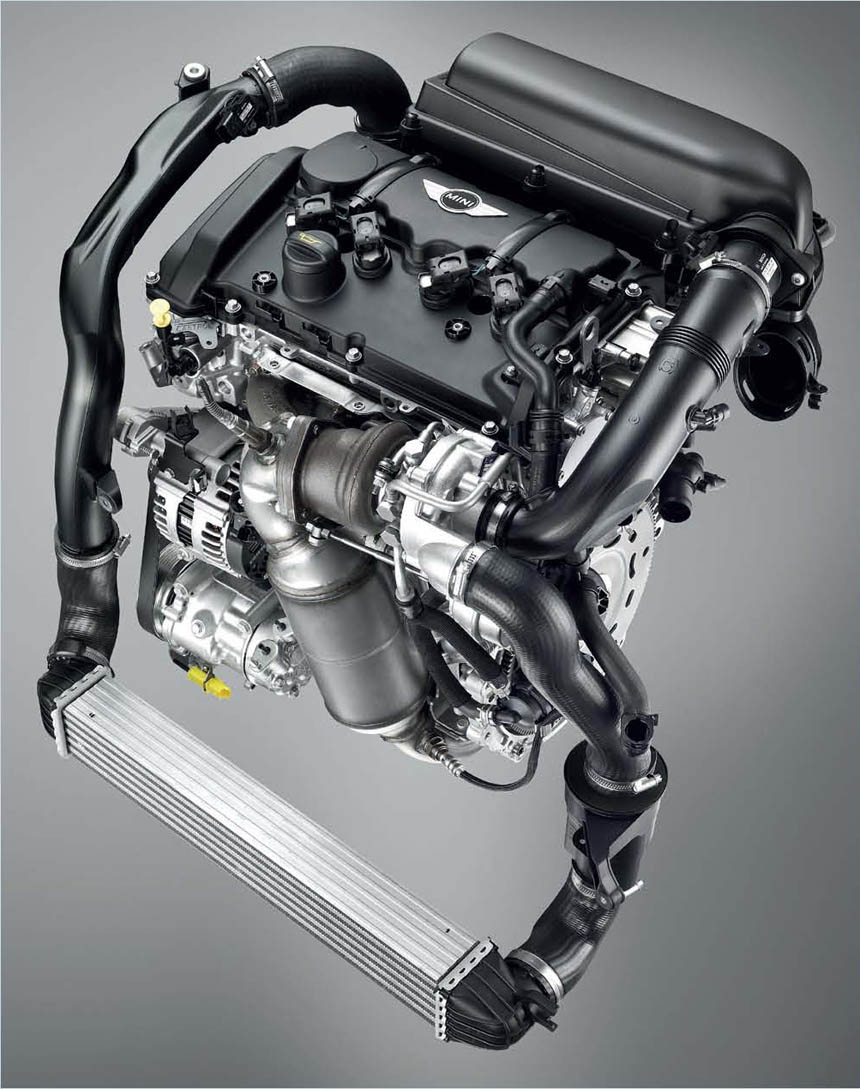
MINI introduced a new engine to the range, combining power with greater efficiency. NEWSPRESS
The new MINI One MINIMALISM line, which was available with two engine variants, had the lowest emissions values of any petrol MINI, using optimized engine technology, brake energy regeneration, the auto start-stop function, shift point display and other MINIMALISM measures to achieve a CO2 figure of 119g/km. In the new MINI petrol units, measures such as reducing friction and improving heat management in the basic engine enabled further improvements in efficiency. The engines were now served by a map-controlled oil pump with need-based operation, which ensures efficient use of energy.
Driving the more powerful Cooper S, the new 1.6-litre also featured another unique attribute in the small car segment: it was the first time that the twin-scroll turbocharger and petrol direct-injection system had been offered, together with fully variable valve control. Based on the ‘Valvetronic’ system used in BMW engines, this throttle-free load-control technology optimizes the engine’s responses and enables a significant reduction in fuel consumption and emissions. It does so by adjusting the lift and opening period of the intake valves to the driver’s power requirements within fractions of a second. The new engine was labelled the world’s most efficient unit in this displacement class.
For those who are not hardcore MINI fans, it may have been slightly difficult to pinpoint the differences between the first and second generation cars. To look at, the two were very similar in appearance, and it looked as though the MINI had just been given another facelift. Considering how successful the first generation MINI had been, it made perfect sense to leave the shell mostly untouched, making only small amendments to its detail; the new MINI’s looks were, after all, a key selling point and were unrivalled – although BMW assured the press that every panel was different and was based on a re-engineered platform. The new, new MINI featured a lower glass line as well as an extended rear window. The front headlights were another surprise: they were now mounted to the body, having previously been integrated in the bonnet.
BMW MINI R56 Cooper (2006–2015)
Layout and chassis
Three-door, four-seat hatchback with steel body/chassis
Engine platform: N12B14
Transmission: M6
No. of doors: 3
No. of seats: 4
Engine
Type: 1.6-litre, in-line
No. of cylinders: 4
Valves: 16
No. of valves per cylinder: 4
Block material: Aluminium
Head material: Aluminium
Cooling: Air cooled
Fuel management: MEV 17,2
Displacement: 1,598cc
Stroke/Bore: 85.8/77mm
Power output: 120bhp
Max. torque: 160Nm
Compression ratio: 11:1
Transmission
Type: Getrag G255
1st 3.214
2nd 1.792
3rd 1.194
4th 0.914
5th 0.784
6th 0.683
Reverse: 3.143
Final Drive: 4.35
Suspension and steering
Suspension front: MacPherson struts, coil springs, anti-roll bar
Suspension rear: Z-axle, longitudinal struts, coil springs, anti-roll bar
Steering type: Rack and Pinion Zahnst (EPS)
Steering ratio: 14.1:1
Tyres
Tyre size front: 175/65R15 84 H
Tyre size rear: 175/65R15 84 H
Wheel size front: 5.5 J × 15 light alloys
Wheels size rear: 6.5 J × 16 alloys run flat
Brakes
Brake front and diameter: Ventilated discs 280mm
Brake rear and diameter: Solid discs 259mm
Dimensions
Vehicle length: 3,699mm (146in)
Vehicle width: 1,683mm (66in)
Vehicle height: 1,407mm (55in)
Wheelbase: 2,467mm (97in)
Turning circle: 10.7m (35ft)
Overhang front: 565mm (22in)
Overhang rear: 139mm (5in)
Track front: 1,459mm (57in)
Track rear: 1,467mm (58in)
Trunk volume: 160–680cum
Tank capacity: 40 litres
Unladen weight: 1,056/1,140kg (2,328/2,514lb)
Axle load ratio, rear: 38.7 per cent
Gross vehicle weight: 1,515kg (3,340lb)
Payload: 450kg (992lb)
Axle load limit front: 855kg (1,885lb)
Axle load limit rear: 740kg (1,632lb)
Performance
Top speed: 126mph (203km/h)
Acceleration: 0–60mph: 8.8 seconds
Fuel consumption
Combined: 52mpg (5.4ltr/100km
CO2 emissions: 239g/km
Inside the car, the MINI felt much more premium, with a high-quality feel to the cabin and a range of new gadgets and gizmos. The central speedometer still dominated the cockpit, as it always had done, only now it was bigger and featured integrated controls for the audio system. The interior ambiance could also be adapted to the mood via a switch that controlled the ambient lighting, which had a variety of colours. The new car was roomier, too.
Finally, because this last incarnation of the MINI was born at a time when fuel prices were rocketing once again, and vehicle tax bands continued to multiply figures for vehicles producing more than 120g/km of CO2, it also boasted a number of efficiency credentials. By this point, MINI had been injected with a range of technological upgrades; it now featured a stop-start system, which shuts down the engine when the car is stopped for more than five seconds, and automatically restarts when the driver re-engages the clutch.
Underneath the metal, the MINI’s slightly larger body could accommodate a range of new engines and a standard six-speed manual gearbox. To replace the Chrysler-built unit that powered the first generation MINI, BMW introduced a brand new 1.6-litre, 4-cylinder engine that was engineered at BMW’s Hams Hall engine plant in Warwickshire. This particular power unit – known as the Prince engine – had been developed by BMW in conjunction with Peugeot-Citroën, with the base model Cooper running a normally aspirated version, featuring BMW’s Valvetronic throttle system, which produced 118bhp. At the top of the range, the Cooper S was powered by a turbocharged version of the 4-cylinder engine, only without the Valvetronic system. Instead, it gained a direct injection, which enabled it to produce 173bhp and 259Nm of torque. For drivers wishing to feel a little sportier behind the wheel, the Cooper and Cooper S models also came with optional Aisin Warner automatic transmission, which could also be paired with paddle-shifters on the steering wheel.
Then of course there is the Cooper S John Cooper Works unit, capable of producing 210bhp and powering you from 0 to 100km/h in less than 7sec, and then going on to reach 146mph (235km/h). But was the turbocharged unit as liberating as the former supercharged Cooper S? It may not have sounded as good, but it was certainly more advanced. The engine in question features low controlled oil and water pumps, which automatically shut down to save energy when they are not in use. Meanwhile, the twin-scroll design turbocharger – featuring two separate channels of exhaust gas from two cylinders in order to reduce turbo-lag – helped to improve the MINI’s top speed output. BMW strived to maintain the MINI’s bottom-end grunt, while improving the car’s top-end response. It certainly worked, and the peak 240Nm of torque is available all the way from 1,600 to 5,000rpm, with an ‘overboost’ to 260Nm available at an extra squeeze of the accelerator for overtaking. It may have lost the whine from the supercharger, but the 4-cylinder exhaust note certainly paired well with the sound of squealing rubber. In any case, for more relaxed, long distance commutes, the loss of the supercharger could be seen as a blessing, reducing cabin noise.
Talking of squealing, the second generation MINI also waved goodbye to that problematic electro-hydraulic steering set-up, which was replaced by electric power assistance. This didn’t cause any dramas when it came to steering feel and handling: the wheel remained nicely weighted, and cornering responses were arguably improved. The adjustable chassis also played a significant role in the enjoyable cornering antics, with the DSC stability control system stepping in to prevent too much oversteer and the optional limited slip differential curing any signs of understeer. But with the flick of a switch, the traction control can be turned off and the rear of the car is firmly in the hands of the driver, opening up all sorts of possibilities for tail-happy fun. This is quite spectacular, considering the usual limitations of front-wheel-drive chassis.
To help tame the extra power and occasional cornering antics, the MINI was also fitted with larger discs, which would bring it to a halt rather rapidly. It is no wonder that the Cooper S can lap the legendary, notorious Nürburgring Nordschelieffe no less than 15sec quicker than the previous R53 Cooper S. The second generation MINI was so popular that it helped MINI production reach 1 million at Plant Oxford in April 2007.
The second generation MINI One was added to the range early in 2007, followed by the introduction of the very first diesel-powered Cooper in April, labelled the Cooper D. Powered by a 1.6-litre engine, the diesel-powered unit would later – in 2011 – become available with a 2.0-litre unit for the automatic Cooper and a high performance diesel, the Cooper SD. The Cooper SD variant was launched across the Hatch, Convertible, Clubman and Countryman range and featured a 2-litre common-rail turbo-diesel engine, derived from MINI’s existing 1.6-litre diesel unit, which already produced 141bhp and 305Nm of torque. The new 2-litre unit features an all-aluminium crankcase and a variable intake turbocharger, in addition to the full suite of MINI’s MINIMALISM technology kit, which incorporates brake energy generation, auto stop/start and electric power steering.
As well as delivering an impressive 65.7mpg (4.3ltr/100km), the SD hatchback can still reach 0–100km/h in just over 8sec. The Clubman and Convertible versions weren’t too far off, with an 8.6 and 8.7sec 0–100km/h time, and combined fuel consumption figures of 64.2mpg (4.4ltr/100km) and 62.8mpg (4.5ltr/100km). The larger Countryman was the least agile and least economical, with the front-wheel-drive Cooper SD reaching 62mph (100km/h) in 9.3sec, 1 sec quicker than the ALL4 derivative, and delivered 61.4mpg (4.6ltr/100km). From a visual perspective, the Cooper SD aims to resemble that of the sporty Cooper S, sharing the larger front air intakes, the bonnet scoop and the roof spoiler (aside from the Convertible). Much like the petrol-powered Cooper S cars, the SD was rather pricey, starting from £ 18,750 for the hatchback and £23,190 for the Countryman ALL4.
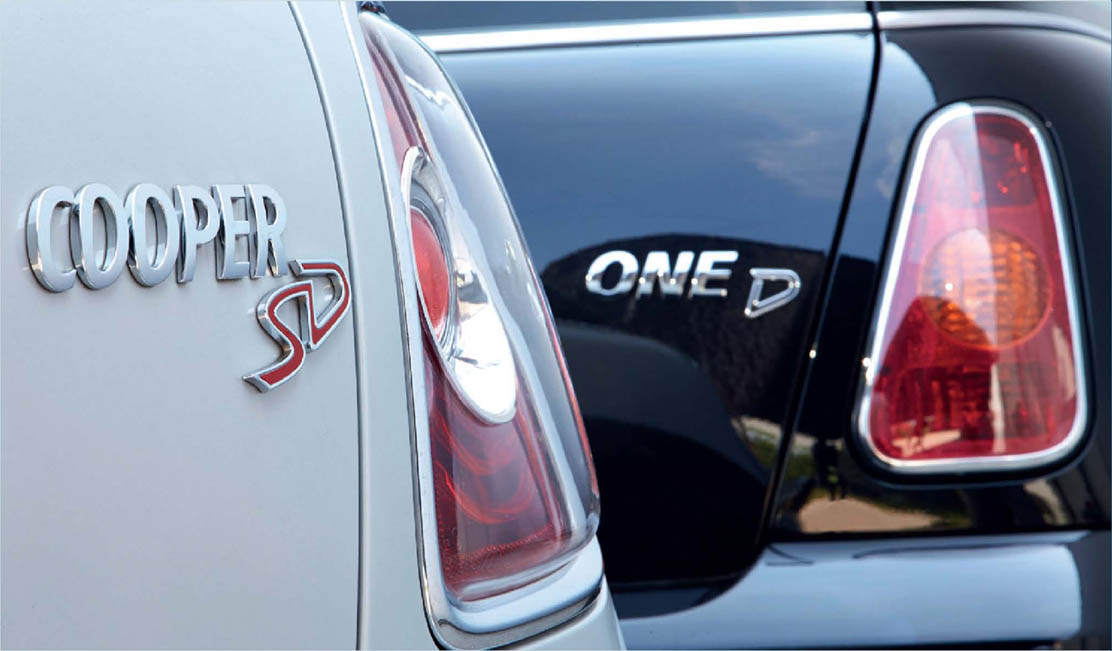
The SD features a 2.0-litre common-rail turbo-diesel engine, producing 141bhp. NEWSPRESS
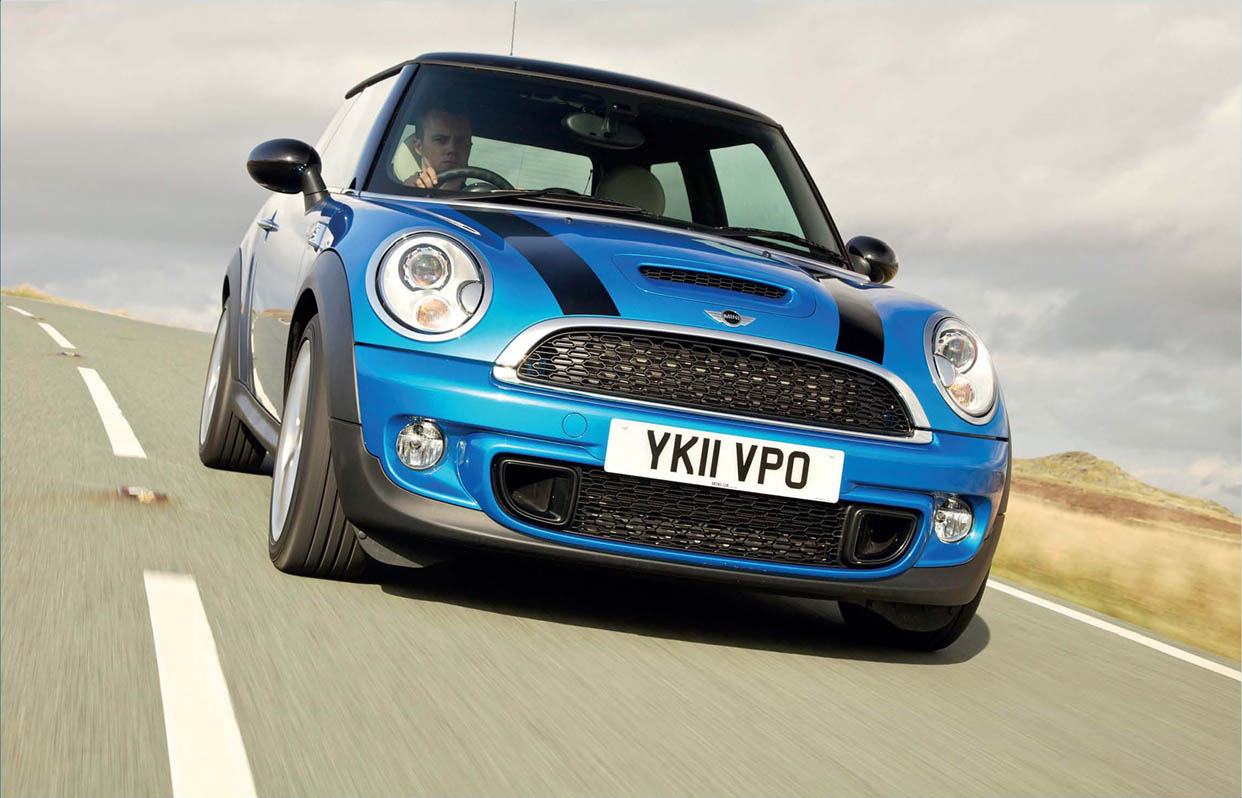
The SD resembles the sporty Cooper S, sharing larger front air intakes and the bonnet scoop. NEWSPRESS
BMW MINI R56 Cooper S 3dr (2006–2015)
Layout and chassis
Three-door, four-seat hatchback with steel body/chassis
Engine platform: N12B14
Transmission: M6
No. of doors: 3
No. of seats: 4
Engine
Type: 1.6-litre, in-line, turbocharged
No. of cylinders: 4
Valves: 16
No. of valves per cylinder: 4
Block material: Aluminium
Head material: Aluminium
Cooling: Air cooled
Fuel management: MED 17,2
Displacement: 1598cc
Stroke/Bore: 85.8/77mm
Nominal power: 181bhp
Max. torque: 260Nm
Compression ratio: 10.5:1
Transmission
Type: Getrag G253
1st 3.308
2nd 2.13
3rd 1.483
4th 1.139
5th 0.949
6th 0.816
Suspension and steering
Suspension front: MacPherson struts, coil springs, anti-roll bar
Suspension rear: Z-axle, longitudinal struts, coil springs, anti-roll bar
Steering type: Rack and pinion Zahnst (EPS)
Steering ratio: 14.1:1
Tyres
Tyre size front: 195/55R16 87 V RSC
Tyre size rear: 195/55R16 87 V RSC
Wheel size front: 6.5 J × 16 light alloys
Wheels size rear: 6.5 J × 16 alloys run flat
Brakes
Brake front and diameter: Ventilated discs 294mm
Brake rear and diameter: Solid discs 259mm
Dimensions
Vehicle length: 3,714mm (146in)
Vehicle width: 1,683mm (66in)
Vehicle height: 1,407mm (55in)
Wheelbase: 2,467mm (97in)
Turning circle: 10.7m (35ft)
Overhang front: 565mm (22in)
Overhang rear: 130mm (5in)
Track front: 1,453mm (57in)
Track rear: 1,461mm (58in)
Luggage capacity: 160–680cum
Tank capacity: 50 litres
Curb weight: 1,130/1,205kg (2,492/2,657lb)
Axle load ratio, rear: 37.8 per cent
Gross vehicle weight: 1,580kg (3,484lb)
Payload: 450kg (992lb)
Axle load limit front: 855kg (1,885lb)
Axle load limit rear: 755kg (1,665lb)
Performance
Top speed: 142mph
Acceleration: 0–60mph: 6.8 seconds
Fuel consumption
Combined: 48mpg (5.9ltr/100km)
CO2 emissions: 136g/km
The MINI Clubman – A ‘Mini’ Estate
2007 was also the year that MINI decided it was time to follow in the footsteps of its predecessor and launch another brand new model to join the MINI line-up. Alongside the hatch and the convertible, MINI unveiled the Clubman, R55, which went on sale across Europe towards the end of the year in November. By this point, the MINI badge was sold in more than seventy countries worldwide, reaffirming MINI’s importance in the modern automotive industry. You’ll remember that ‘Clubman’ was the name given to the classic of the 1970s, which resulted in a squarefronted hot hatch, later developed into a practical estate car and the 1275GT hot hatch.
Being an estate car, the new MINI Clubman isn’t based on the name it shares with the original, but on foundations laid by the Austin and Morris Mini Traveller and Countryman. Since BMW didn’t own the rights to those names, the car maker christened its new estate car ‘Clubman’, which was essentially the same car as the hatchback, available in One, Cooper, Cooper S, Cooper D and JCW form, but with a longer tail. The Clubman is identical to the three-door hatchback from the B-pillar forward, while it features an overall length increased by 238.7mm (9.4in), a 78.7mm (3.1in) longer wheelbase, much more rear legroom and 260ltr (9.2cu ft) of extra space in the boot, which amounts to a 920ltr (33cu ft) luggage space with the rear seats folded. Unlike its three-door counterpart, the Clubman’s rear space was its key selling point, with access via its rear bi-parting split doors. The Clubman also features bi-parting side doors, coined the Clubdoor. BMW also released the Clubman in a special edition Clubman Bond Street, named after the prestigious shopping venue in London.
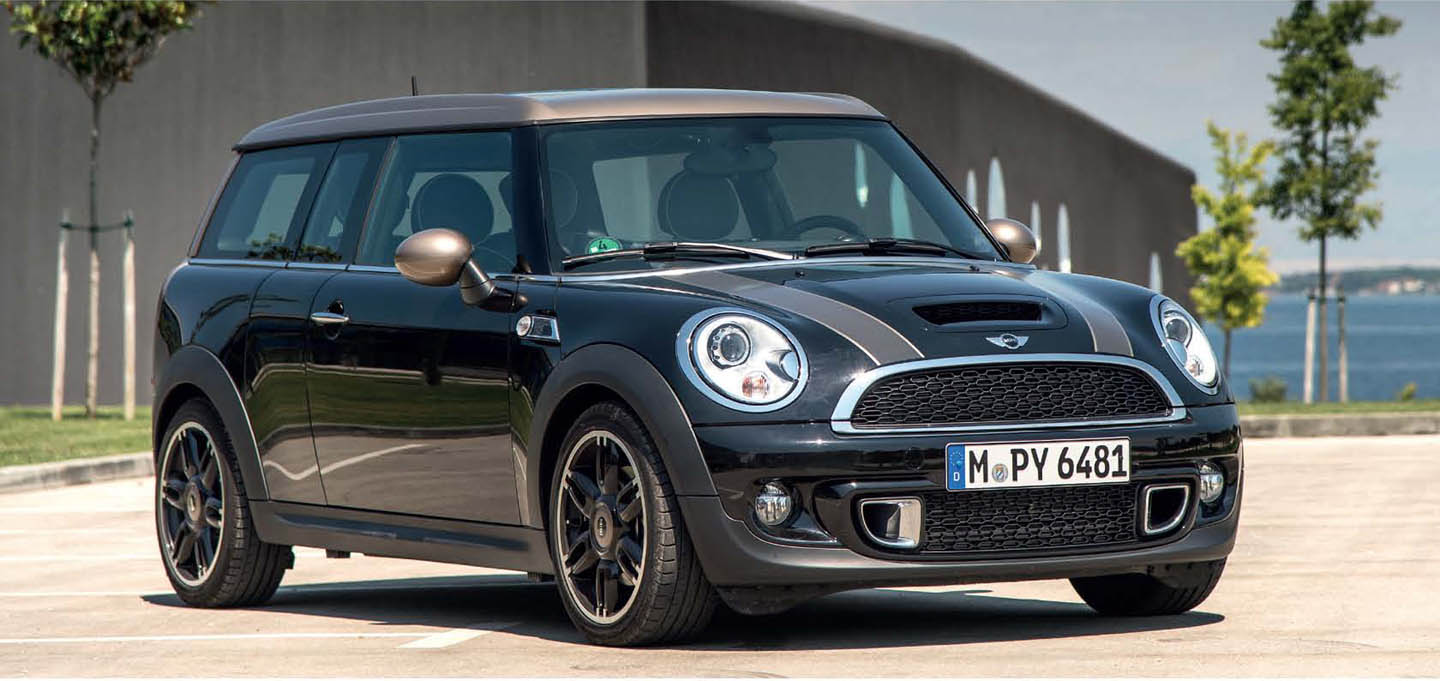
In 2007, MINI launched the all-new Clubman variant – the modern MINI estate. NEWSPRESS
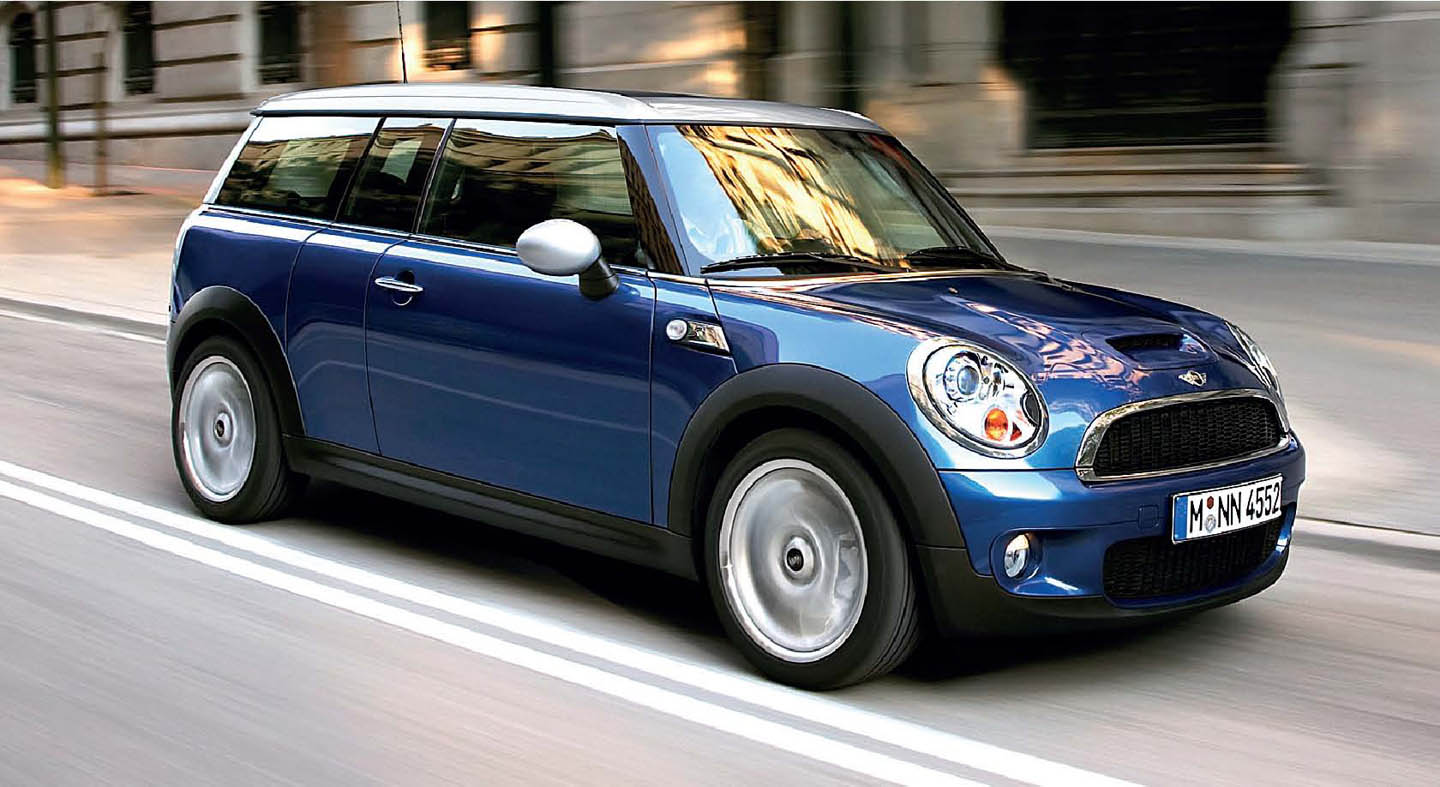
The Clubman is based on the foundations laid by the Traveller and Countryman. NEWSPRESS

The Clubman is available in One, Cooper, S, SD and JCW form with bi-parting split doors. NEWSPRESS

MINI released the Clubman Bond Street in 2013, after the prestigious shopping venue. NEWSPRESS
The Convertible – Top-down Adventures
In 2008, BMW announced plans to launch a second generation Convertible – R57 – which, aside from running the new 4-cylinder engines and riding on a new suspension, benefited from a 10 per cent stiffer structure, preventing the rattles and shakes often experienced in the former R52 Convertible. Hitting the showroom in March 2009, the Convertible was available in the usual Cooper and Cooper S forms, with the John Cooper Works version appearing a little later into the future. The new Convertible featured a raised shoulder line, highlighted with a chrome strip. The Cooper and Cooper S models retained the traditional hexagonal radiator grille with round headlights, while the Cooper S also received its usual 20mm (¾in) high ‘powerdome’ bonnet scoop, a gaping front air intake and a rear bumper incorporating a large diffuser and twin, centrally mounted exhaust pipes.
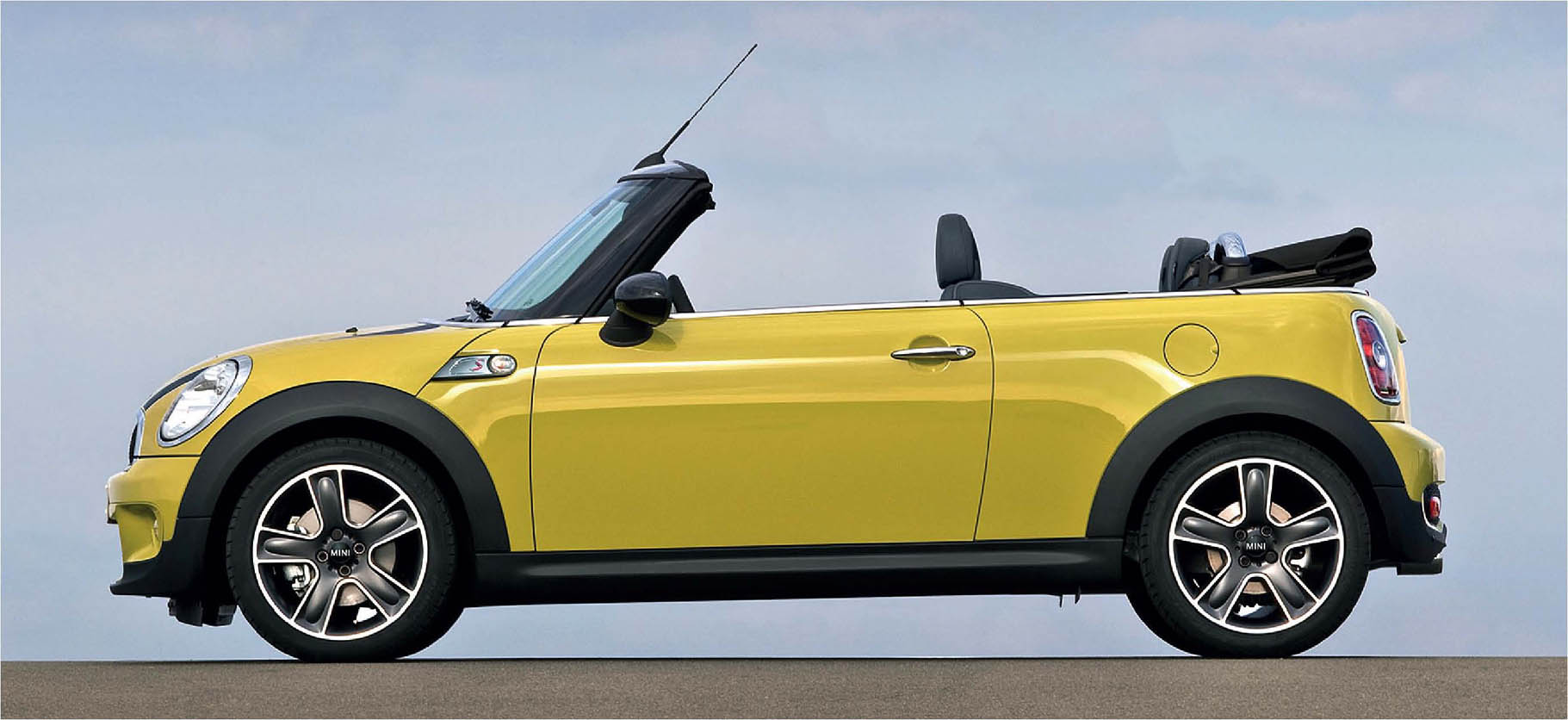
In 2008, BMW announced plans to launch a second generation convertible – R57. NEWSPRESS
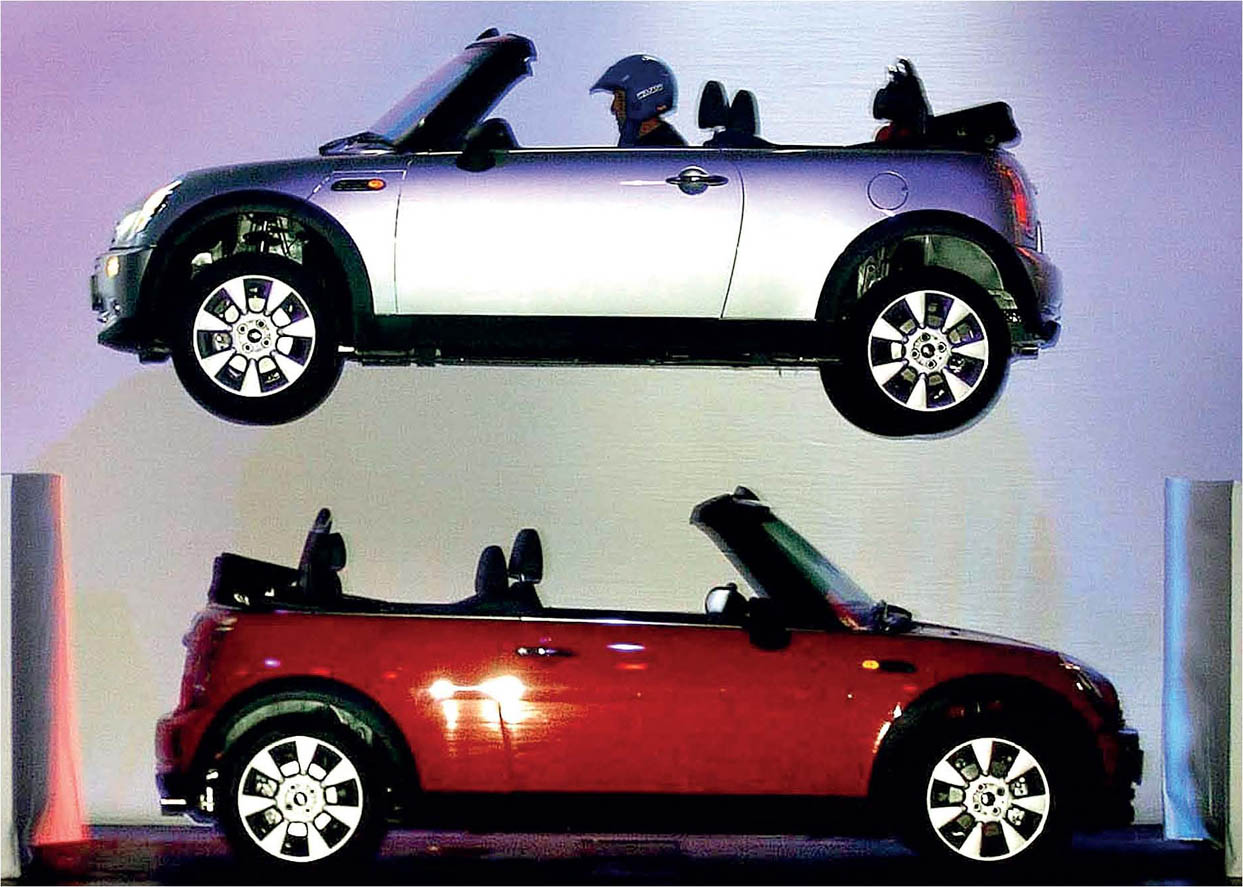
The Convertible benefited from a 10 per cent stiffer structure, preventing the rattles often experienced in the former R52. NEWSPRESS
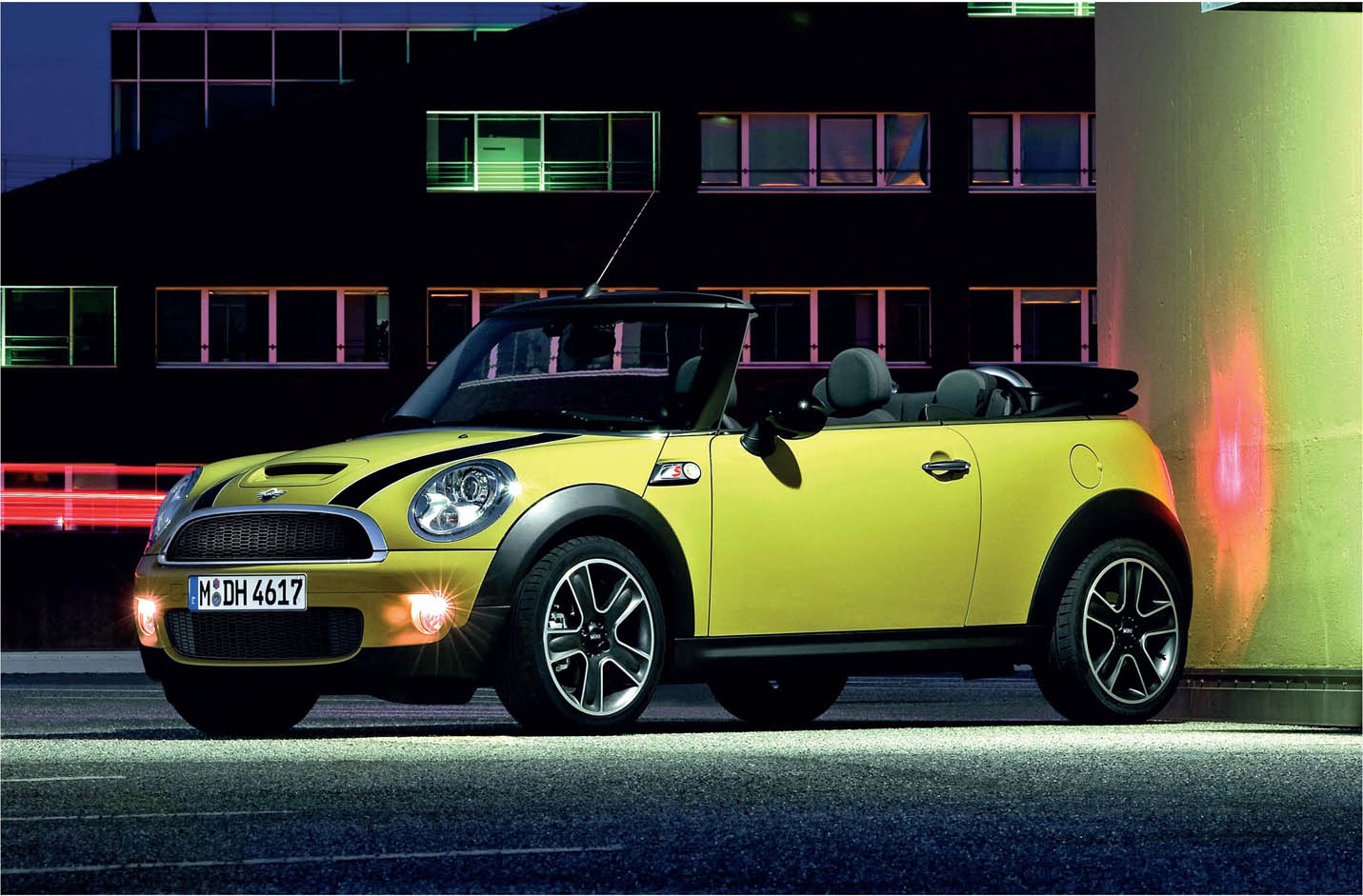
The electric roof can be lowered and raised in just 15sec at speeds of up to 20mph (32km/h). NEWSPRESS
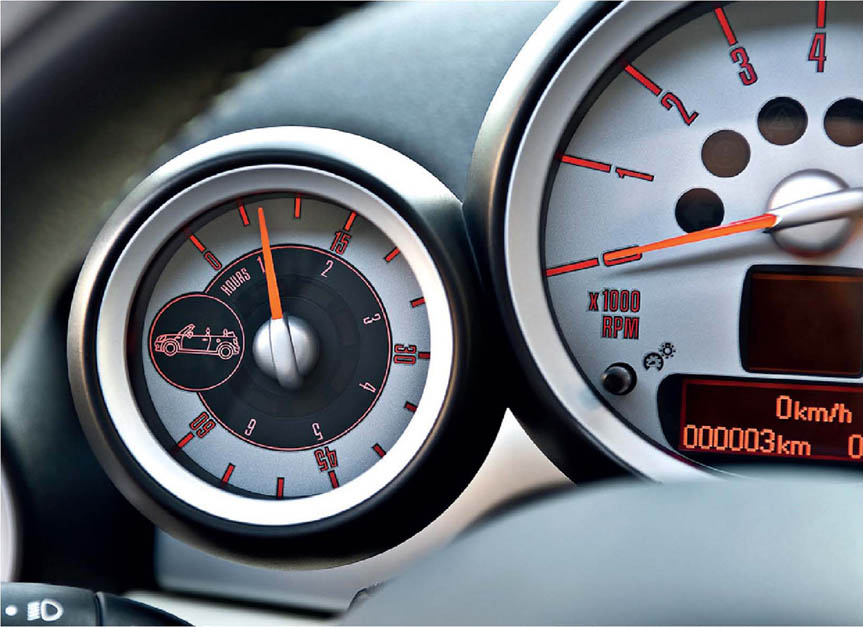
The Openometer records how many hours the owner spends driving with the roof down. NEWSPRESS
The new Convertible’s powertrains were inherited from the outgoing Mini hatchback, which benefited from the MINI version of BMW’s Efficient Dynamics systems known as MINIMALISM. The system includes features such as auto start-stop, brake energy regeneration and shift point display, and can improve fuel economy and CO2 emissions by up to 23 per cent. This resulted in the new Cooper and Cooper S Convertibles being two VED bands lower than their predecessors, while still pumping out an impressive 120 and 175bhp. With an aim of reducing scuttle shake, the new Convertible’s body structure, floorpan, Apillars and side sills were also revised and strengthened, which also improved crash protection and reduced bodyweight by 10kg (22lb). Small highlights included the fact that the electric roof could be lowered and raised in just 15sec at speeds of up to 20mph (32km/h), as well as partially retracted at speeds of up to 75mph (120km/h), to act as a sunroof, and these were features that made the new Convertible such a hit. Its boot capacity had even been increased by 5ltr (0.2cu ft) to 125ltr (4.4cu ft) with the roof down, and 170ltr (6.0cu ft) with the roof up. Similarly, for drivers who didn’t often carry rear passengers, the rear seats could be folded to increase the boot capacity to a total of 660ltr (23.3cu ft) – not bad for a topless, sporty run-around.
The best feature has to be its Openometer, which records how many hours the owner spends driving with the roof down, leaving them with no excuse but to keep that roof off. To make sure the new Convertible stood out as a MINI marvel in its own right, it was launched with two new colours, exclusive to the model: Interchange Yellow and Horizon Blue – not what you would call subtle – with the roof colours remaining basic with Black, Denim Blue and Hot Chocolate. Prices were beginning to creep up, though, with the entry level Cooper starting from £15,995 and the Cooper S jumping to £18,995, and while air conditioning was now standard, those pricey yet desirable optional extras were bound to add at least another £2,000 to the list price.
To mark the brand’s fiftieth birthday, more than 25,000 people from forty countries arrived at the Silverstone Circuit for a three-day festival of cars, MINI Challenge racing and music. More than 10,000 classic Minis and modern MINIs lined up alongside each other to mark this joyous and historic occasion, and amongst the visitors were the original cars from The Italian Job movie, as well as the model created by British fashion designer Paul Smith in 1997. For BMW this day was the perfect opportunity to reveal three new fiftieth anniversary models in honour of the mighty Mini, to which it owed its success: the MINI 50 Camden, the MINI 50 Mayfair and the MINI John Cooper Works Championship 50.
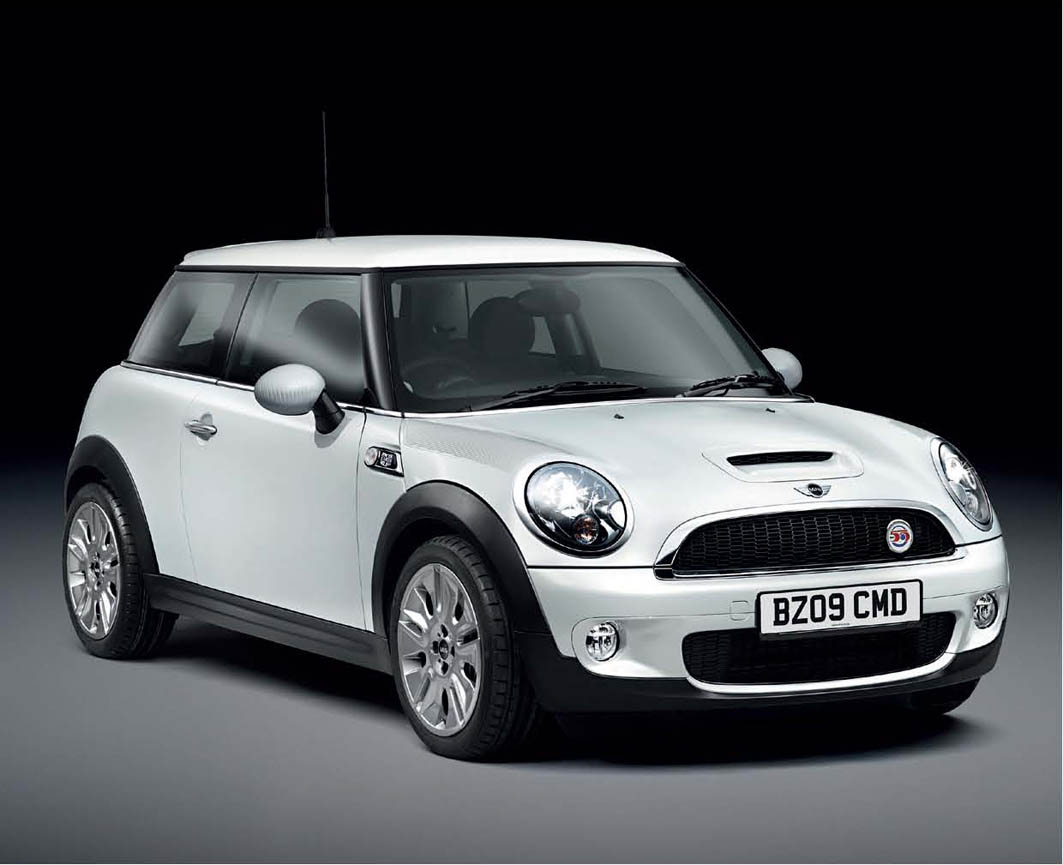
To celebrate the brand’s fiftieth anniversary, BMW launched three new MINI models: the 50 Camden… NEWSPRESS
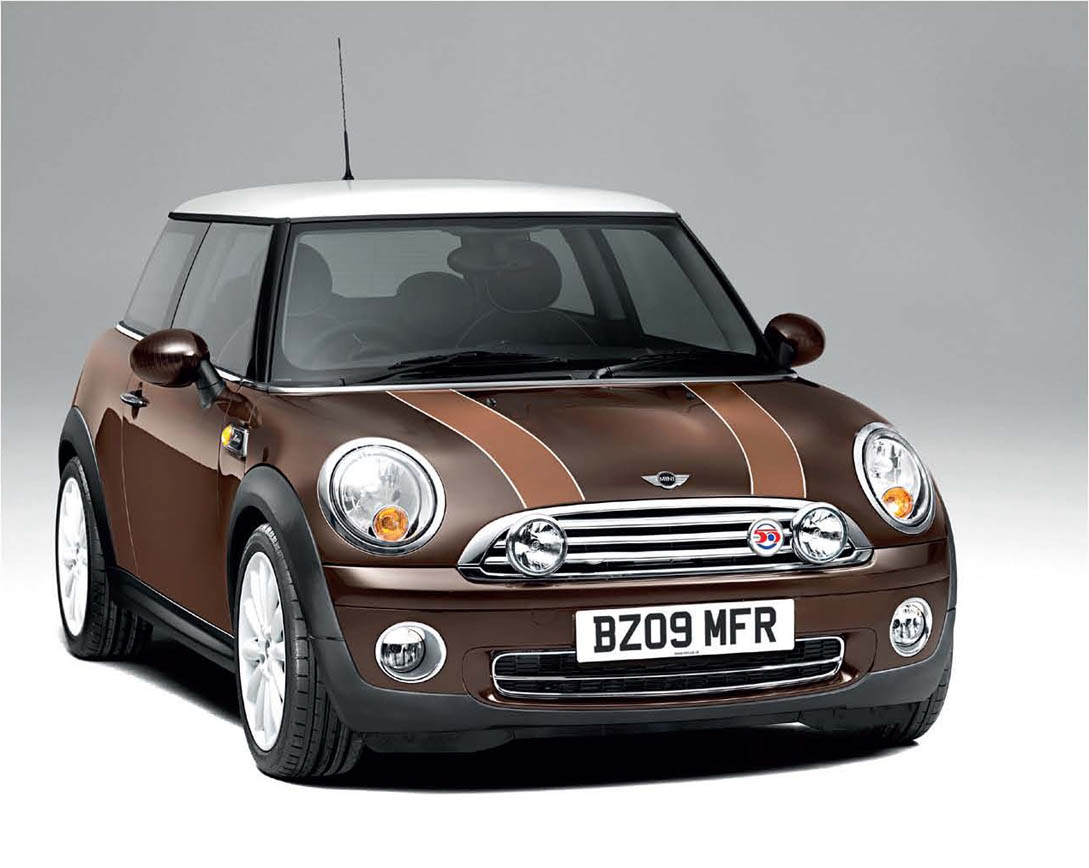
…the 50 Mayfair…
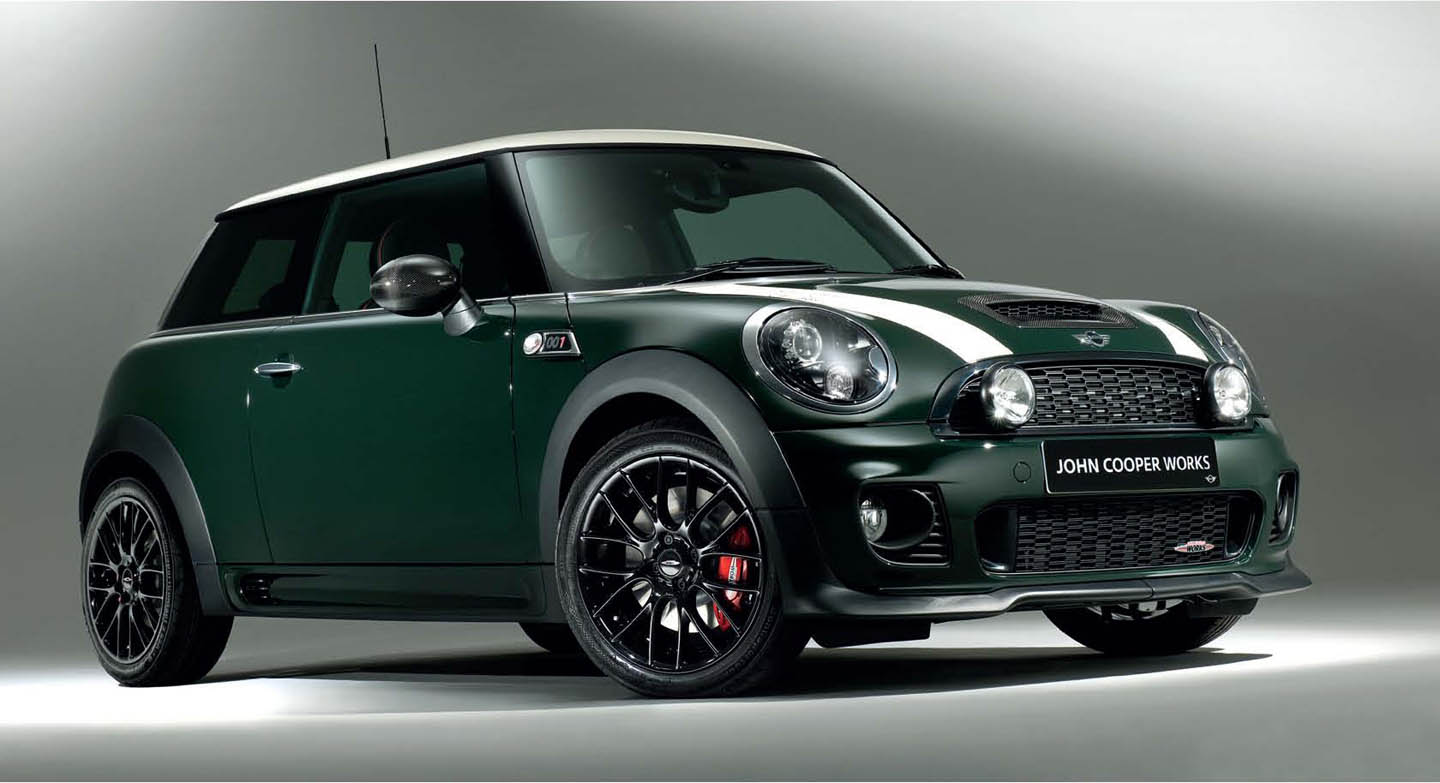
…and John Cooper Works Championship 50. NEWSPRESS
The 50 Camden and 50 Mayfair hatches went on sale for just one year in September 2009, and were available in Cooper, Cooper D and Cooper S form. The 50 Camden could be identified by its solid white roof, coupled with either White Silver, Midnight Black or Horizon Blue metallic paintwork, and White Shield 17in alloy wheels. The 50 Mayfair was available in a combination of either Hot Chocolate or Midnight Black metallic paintwork with a White roof, or Pepper White solid paintwork with a Black roof with unique 17in, twelve-spoke Infinity Stream alloy wheels and toffee leather seats. The two cars certainly carried a unique style, as well as a rather hefty price tag: the 50 Camden ranged from £18,615 to £21,030, while the 50 Mayfair was priced from £ 18,415 to £21,280.
But it was the limited edition JCW Championship 50 model that was extra special. Conceived by John Cooper’s son, Mike Cooper, the car was designed to commemorate the achievements of his late father, as well as his business Cooper Car Company Ltd; he won both the Formula I Drivers’ and Constructors’ Championships with Jack Brabham in 1959 – the year the Mini was launched. The production run was limited to just 250 examples, solely destined for Europe. All the cars were finished in Connaught Green with Jet Black 17in cross-spoke alloy wheels.
MINI-E: IT’S ELECTRIC
In 2009, the UK launch of the MINI-E was overseen by Lord Drayson, Minister of Science and Innovation, Andy Hearn, general manager at MINI UK, and Lord Adonis, Secretary of State for Transport. It all began when the government’s Technology Strategy Board – with a key responsibility to promote business innovation in technology – announced a consortium lead by BMW Group that would be supported by a proportion of a £25m fund. This enabled the electric MINI to be tested on British roads by public sector, private and corporate drivers before the end of the year. The objective of the Technology Strategy Board was to encourage manufacturers to develop ultra-low carbon vehicles and bring them to market. The trial was part of MINI’s commitment to MINIMALISM, in which the brand has now completed two phases of official public field trials. The MINI-E test programme was the UK’s most in-depth trial ever to take place, while BMW Group became the first to use lithium-ion technology in an all-electric vehicle to operate on the road. The development continues, and BMW Group, using the MINI badge, aims to shape the future of cars.
It all started in the winter of 2009, with the arrival of the MINI-E in the UK. The selected number of electric MINIs were deployed for daily use within a test area in the south-east of England and were on the road for twelve months, where they were trialled to evaluate the technical and social aspects of living with a 100 per cent electric car, and more importantly a fully electric MINI, in a real-world environment. The MINI-E UK Research Consortium, of which BMW Group was the lead partner, comprised several organizations based around Oxford and the south-east of England, all of which played vital roles in the collaborative trial. Members of the consortium included the electric energy and infrastructure provider, Scottish and Southern Energy, and academic partner, Oxford Brookes University’s Sustainable Vehicle Engineering Centre. Scottish and Southern Energy were responsible for the infrastructure of the field trial by installing charging points for all MINI-E test vehicles. The trial came to an end in March 2011.
The MINI-E was powered by state-of-the-art lithium-ion, 35kWh battery packs, which are air-cooled and monitored separately and take approximately four to five hours to charge. The MINI-E can produce 150kW of power, 220Nm of torque, and can accelerate from 0–100km/h in 8.5sec before reaching an electronically limited top speed of 95mph (153km/h). In ideal driving conditions, the E can achieve a driving range of 155 miles (250km), but this is limited to between 80 and 110 miles (129 and 177km) in normal conditions, which includes traffic, road surface changes and speed variants. The MINI-E is also packed with standard equipment including dynamic stability control (DSC), 16in alloy wheels, a sports leather steering wheel, sports seats, air conditioning, and cloth/leather upholstery in Carbon Black with yellow stitching. The MINI-E can easily be identified by its E decals. Being a MINI, even if it is powered by electricity, the E still benefits from the signature 50/50 weight balance ratio, tuned suspension and ‘wheels all-the-way-at-the-corners’ attributes, meaning that it can deliver the same nimble handling for which its petrol- and diesel-powered cousins are renowned.
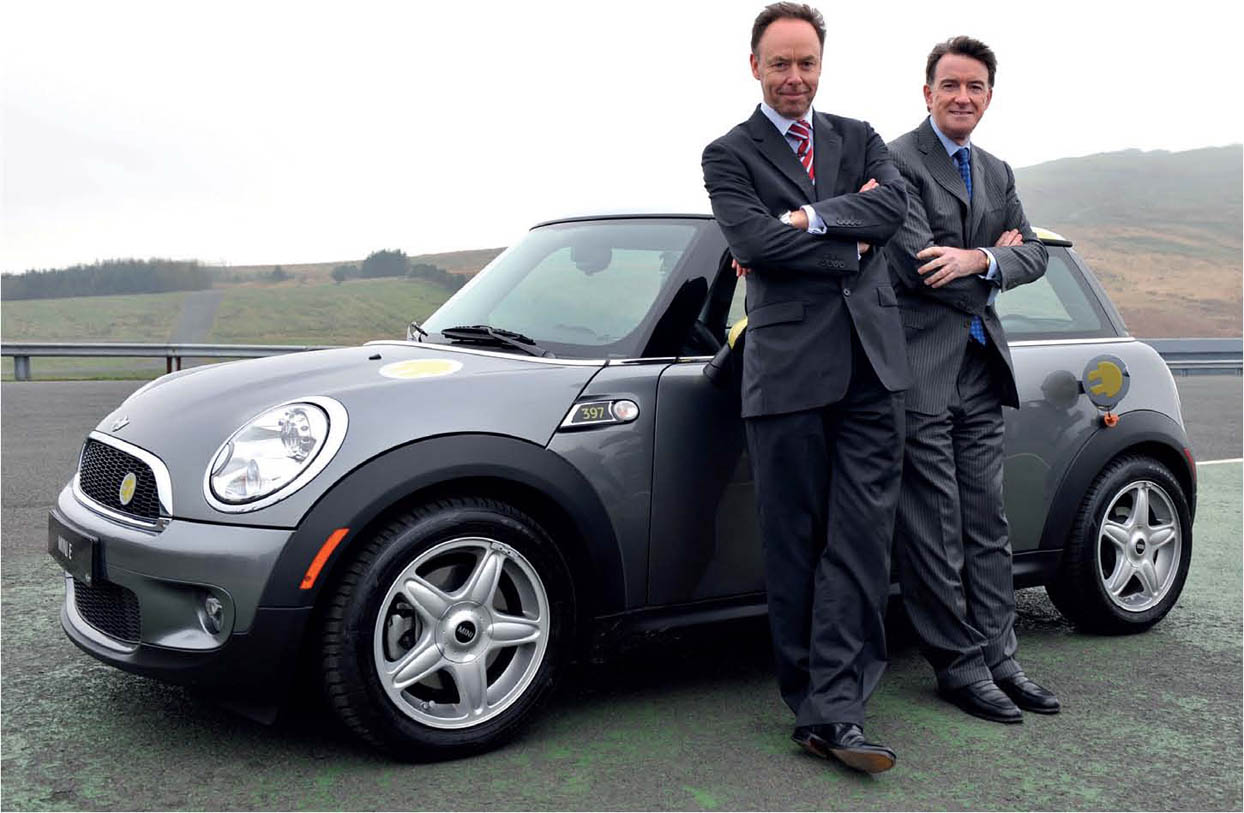
In 2009, the MINI-E joined the Government electric vehicle announcement. NEWSPRESS
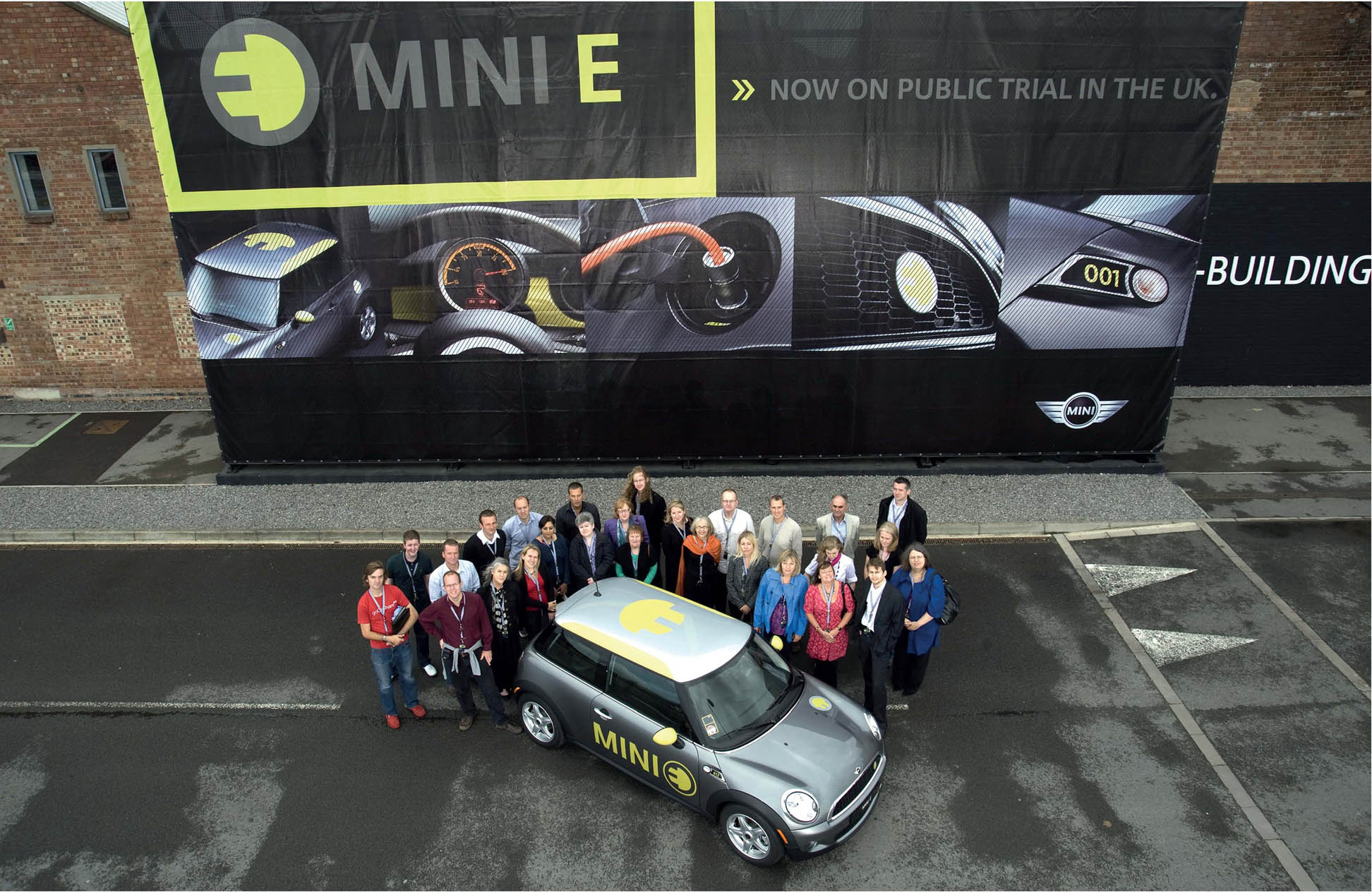
The MINI-E was tested on British roads by the British public on a daily basis. NEWSPRESS
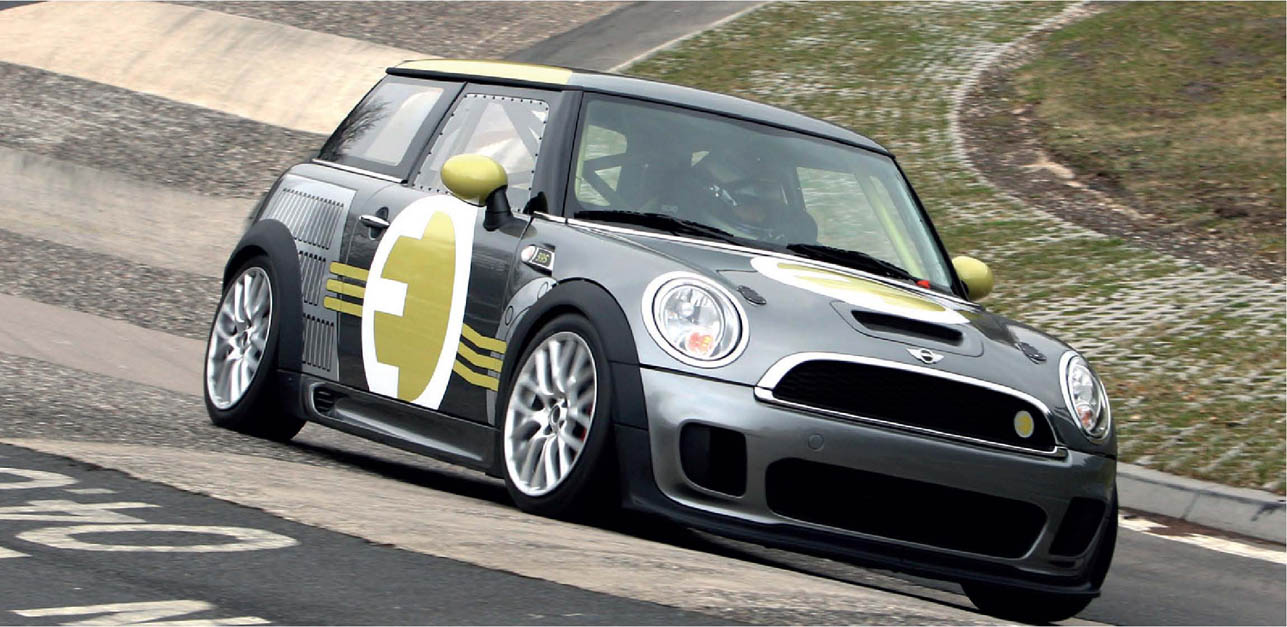
The MINI-E was powered by state-of-the-art lithium-ion, 35kW battery packs. NEWSPRESS